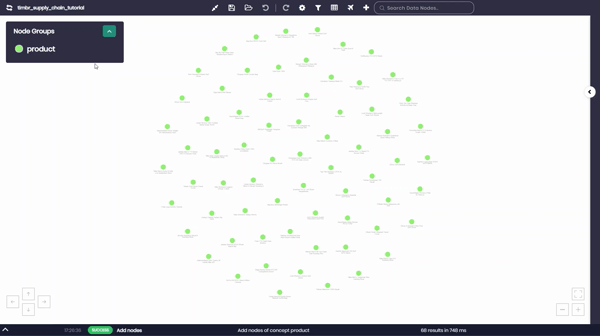timbr core
Ontology-Based Semantic Layer
Timbr powers the modern data stack with a unique semantic layer built on SQL ontologies, connecting raw data to business concepts and governed measures for intuitive, consistent access across BI, APIs, and AI.
Timbr's Open Architecture:
From Raw Data to Semantic Intelligence
Key Capabilities
True (SQL)
ontology
True SQL ontology: concepts, relationships, hierarchies, and logic modeled natively.
Unified, ubiquitous
access
Unified access: Any data source, model once, reuse everywhere, SQL, BI, APIs, AI.
agile ontology
modeling
Agile and versatile: supports bottom-up, top-down, and LLM-assisted modeling.
Controlled access
& governance
Enables governed, traceable, explainable, and reusable logic across the data estate.
What Makes Timbr an Ontology-based semantic layer
- Concepts: Concepts (e.g., Customer, Transaction, Invoice) instead of raw tables.
- Relationships: Relationships (e.g., “Customer places Order”) instead of JOIN conditions.
- Hierarchies, Inheritance and Classifications: Reflect real-world logic and reuse.
- Semantic Annotations: Semantic annotations and filters that govern access, logic, and structure.
- Cross-Domain Mappings: Cross-domain mappings that integrate heterogeneous data into a unified model.
Why Ontologies Matter:
Timbr vs Traditional Semantic Layers
| Capability | Ontology-Based Semantic Layer | Traditional Semantic Models |
|---|---|---|
| Modeling Paradigm | Concepts, relationships, hierarchies, rules, and measures - structured as a knowledge graph. | Tables and dimensions with renamed columns, static joins, and calculated fields. |
| Semantic Expression | Logical relationships, inheritance, recursive paths, and semantic filters defined once and reused. | Relationships expressed as repeated joins, often manually written into downstream tools. |
| SQL Measures & Cubes | Built-in support for reusable SQL measures, metric inheritance, and OLAP-style cubes within the ontology. | Metrics often maintained separately (or in proprietary formats), with limited inheritance and semantic integration. |
| Data Source Integration | Ontologies map to multiple sources without duplication - supporting cross-platform logic. | Typically modeled per source, with limited reuse or cross-database logic. |
| Adaptability to Change | Ontologies evolve dynamically - models adapt to new data, business logic, or users without breaking pipelines. | Schema changes often require model rewrites, remapping, or downstream refactoring. |
| Governance and Reuse | Centralized control of concepts, metrics, access rules, and semantic APIs. | Governance often layered post-hoc or split across disconnected tools. |
| LLM and Agent Compatibility | Native support for NL2SQL, LangChain/GraphRAG SDKs, and autonomous agent context injection. | Not designed with AI in mind; LLM support is typically bolted-on or requires prompt hacks. |
| Consumption Flexibility | SQL, BI, REST, OpenAPI, agents, and LLMs - all access the same governed model. | Consumption often fragmented - BI tools, data apps, and AI require separate logic layers. |
agile & fast modeling
- Bottom-Up, AI Driven Modeling: Model bottom-up with AI by connecting to existing schemas and generating ontology candidates.
- Top-Down Modeling: Model top-down with SQL DDL, LLM-assisted ERD translation, or OWL import.
- Catalog Conversion: Use catalog conversion to map existing metadata into semantic models.
- Databricks Integration: Integrate directly with Databricks notebooks for pipeline-native modeling.
complexity modeling
- Hierarchies: Multi-level hierarchies and classification systems.
- Relationships: Recursive and transitive relationships (e.g., supply chains, org charts).
- Specialization: Concept specialization and inheritance.
- Attributes: Calculated attributes and rule-based filters.
- View Layering: View layering and semantic joins across systems.
Semantic Measures & OLAP Cubes, Natively in SQL
- Define KPIs: Define KPIs once and reuse them across BI tools, APIs, and LLMs.
- Multidimensional Analysis: Support multidimensional analysis with semantic cubes, defined and queried in SQL.
- Accelerate Analytics: Accelerate analytics by combining measures, relationships, and projections in a unified model.
- Expose Metrics: Automatically expose metrics through Timbr’s SQL Metrics Store and semantic APIs.
Semantic Virtualization
And optimized queries
- Virtualized Access: Virtualized access to distributed sources with no data movement.
- Query Optimization: Query optimization and projection reuse across platforms.
- Federated Logic: Federated logic without code duplication or ETL.
- Governed Self-Service: Governed self-service with concept and relationship-aware access.
Model Once,
Use Everywhere
- BI Tools: BI tools (Power BI, Tableau, Looker, Excel).
- LLMs and Agents: LLMs and autonomous agents (via LangChain, LangGraph, and REST).
- SQL Interfaces: SQL interfaces (JDBC, ODBC, SQLAlchemy).
- APIs and Data Apps: APIs and data apps (via OpenAPI/Swagger).
A Foundation for BI, AI, and Data Products
- NL Queries: Accurate natural language queries and NL2SQL generation.
- Metric Definitions: Trusted SQL metric definitions and inheritance.
- GenAI Workflows: Scalable GraphRAG and LangGraph agent workflows.
- Semantic APIs: Governed semantic APIs for data apps and dashboards.
- Data Products: Flexible multi-cloud, multi-domain data products.
